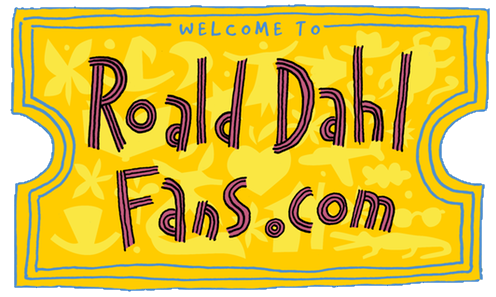This review was written by Michiko Kakutani and printed in the April 26, 1994 edition of The New York Times.
“The Facts Behind a Fantasist’s Unsettling Stories”
ROALD DAHL: A BIOGRAPHY. By Jeremy Treglown. Illustrated. 322 pages. Farrar, Straus & Giroux. $25.
By turns macabre and magical, fantastical and perverse, Roald Dahl’s stories for children and for adults are peculiarly modern folk tales, animated by primal longings, resentments and fears. In such classic children’s books as Charlie and the Chocolate Factory, The BFG, The Witches, and James and the Giant Peach, death and loss and separation are palpable enough realities – surfacing in the form of cannibalistic giants, tyrannical adults and spell-casting witches – but there is also the possibility of liberation and transcendence. Mr. Dahl’s solitary child heroes routinely triumph over their adversaries, while achieving love or knowledge or success.
His stories for grown-ups are decidedly more cynical and malicious. In these, manipulation takes the place of magic, cruelty the place of irreverence. In “Lamb to the Slaughter,” a pregnant woman kills her unfaithful husband by hitting him over the head with a frozen leg of lamb, which she later cooks and serves to the police. In “Skin,” a starving man is forced to sell a picture of his wife that has been tattooed onto his back by a famous artist. And in “Taste,” a pretentious aesthete bets his daughter’s hand in marriage that a dinner guest can’t identify what he’s drinking.
As Roald Dahl: A Biography, Jeremy Treglown’s marvelously supple and illuminating book, so nimbly demonstrates, Dahl, who died in 1990 at the age of 74, was a man of many contradictions: a Tory who loved to subvert authority, a misanthrope who found optimism in adversity, a shameless self-promoter who enjoyed giving money to worthy causes. “He was famously a war hero, a connoisseur, a philanthropist, a devoted family man who had to confront an appalling succession of tragedies,” writes Mr. Treglown. “He was also, as will be seen, a fantasist, an anti-Semite, a bully and a self-publicizing troublemaker.”
In the words of a longtime Dahl family friend: “Almost anything you could say about him would be true. It depended which side he decided to show you.”
Throughout his adult life, Dahl retained an adolescent desire to shock – he specialized in practical jokes and outrageous dinner-party remarks – and his fiction, too, remained firmly rooted in the experiences of his childhood and youth. Having lost his father and his sister when he was 4, Dahl grew up in Wales as the apple of his mother’s eye; though lonely and bereaved, he was very much the center of attention at home, a situation that nurtured both his oversize imagination and his oversize ego.
At St. Peter’s Preparatory School and Repton, Dahl was exposed to the bullying, beatings and competitiveness endemic to so many British public schools in the 1920’s and 30’s, and the experience, Mr. Treglown suggests, instilled in him a keen sense of the consequences of emotional and physical violence, and a highly developed taste for antiauthoritarian fantasies.
World War II enabled Dahl to live out some of his dreams: first, as a fighter pilot for the Royal Air Force (he is credited with having shot down five enemy airplanes), and later as a sometime spy for British intelligence in Washington. The experiences, this biography contends, gave him plenty of material on which to exercise his self-mythologizing imagination, and they also helped galvanize the darker aspects of his sensibility. “It can’t have helped that in Washington he was professionally encouraged to practice opportunism, duplicity, entrapment,” writes Mr. Treglown. “It is not far from these to the cynicism of his postwar short stories.”
Storytelling began, it seems, as a way for Dahl to monopolize attention at parties; it was a way, says Mr. Treglown, for “assessing, and sometimes dominating, his listener.” With the series of personal tragedies that overtook Dahl’s adult life – his son was seriously injured in a car accident, his oldest daughter died of measles and his first wife, the actress Patricia Neal, suffered a debilitating stroke at the age of 38 – storytelling assumed another meaning as well. By creating a succession of children’s books featuring wizards, magicians and real heroes, Mr. Treglown implies, Dahl was able to enact his own fantasies of being “powerful enough to be able to conquer illness and other misfortunes.”
In the real world, of course, storytelling served more practical ends as well: as sales of his children’s stories escalated into the millions, Dahl became a wealthy and famous author. According to Mr. Treglown, Dahl reveled in his business success and began campaigning in vain for a knighthood. He dispensed highly mythologized versions of his own life, even conducting a self-serving interview with himself.
As depicted in these pages, Dahl emerges as a difficult, sometimes impossible man. He bullied Ms. Neal and his children, and dealt cavalierly with the editors on whose suggestions he depended. He was also a blatant anti-Semite, arguing that “even a stinker like Hitler” hadn’t picked on Jews “for no reason.”
Mr. Treglown, a former editor of The Times Literary Supplement, deals frankly with these disturbing aspects of Dahl’s life, while at the same time explicating his fiction with sympathy and intelligence. He is eloquent on the themes and sources of Dahl’s stories, and equally adept at conveying the collaborative nature of the work (between writer, editor and illustrator) involved in the production of his children’s books.
Mr. Treglown has written an astute and judicious biography, and in doing so, has created a highly compelling portrait of an author whose life was nearly as colorful and unpredictable as his fiction.
